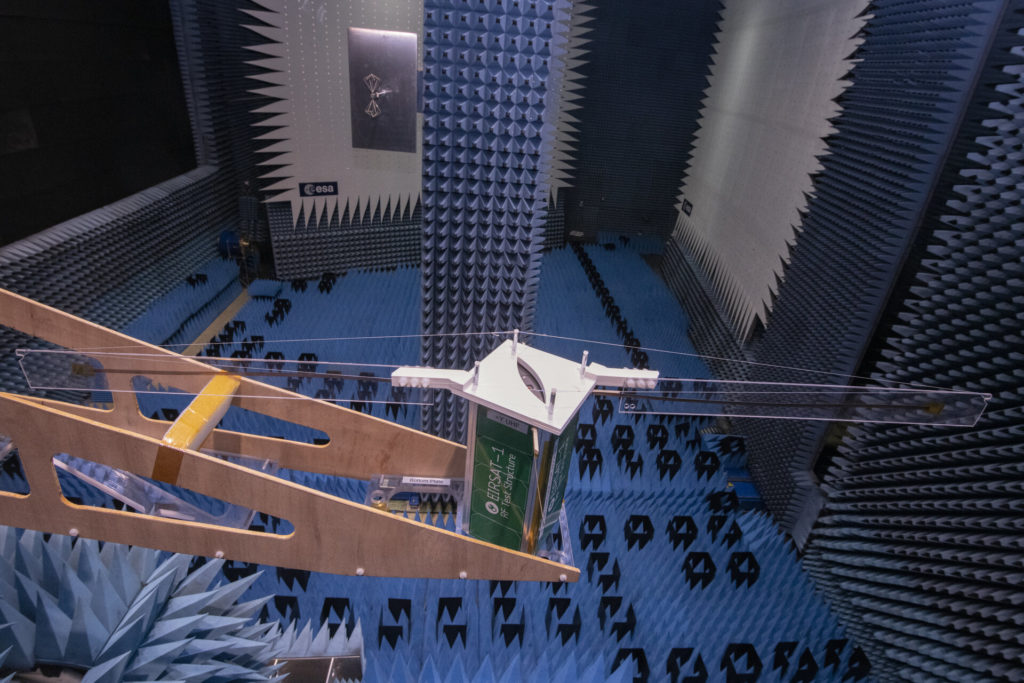Ireland’s entry into the space race is now at the testing phase. Preparatory testing for the space mission, EIRSAT-1, is taking place at the ESA’s Hertz antenna test chamber in Noordwijk, Holland. Educational Irish Research Satellite 1 is being built by students and staff of University College Dublin and Queens University in Belfast, who are participating in ESA Education’s Fly Your Satellite! programme.

The aim is to launch the Satellite from the International Space Station, where it will join a multitude of other objects in Earth’s orbit. At just 22 x 10 x 10 cm, the miniature EIRSAT-1 is smaller than a shoe box but is still equivalent in complexity to a standard space mission. It carries a trio of Irish payloads, with platform subsystems coming from AAC Clyde Space in Scotland.

“We thought it was important to have some ambitious science payloads, beyond simply achieving a working satellite,” says David Murphy, systems engineer for the project. “So EIRSAT-1 carries an advanced gamma ray detector. Developed through an ESA-funded project, this GMOD ‘Gamma-ray Module’ detects gamma ray bursts from deep space as well as ‘terrestrial gamma flashes’ originating within the atmosphere, linked to lightning strikes. Standard gamma ray detectors still rely on vacuum tubes; by comparison the compact, silicon-based GMOD is the equivalent of updating from a CRT to flatscreen TV.”
The mission will also carry protective oxide coatings developed by Irish company Enbio, already embarked on ESA’s Sun-monitoring Solar Orbiter spacecraft. The third payload is entirely software-based: a novel ‘wave based control’ algorithm to operate the nanosatellite’s magnetotorquers, used to control EIRSAT-1’s attitude (or pointing direction) by reacting with Earth’s magnetic field.

EIRSAT-1’s individual payloads have already been qualified for space at ESA Education’s CubeSat Support Facility at the ESEC-Galaxia facility at Transinne in Belgium. Planned delivery to ESA of the satellite is estimated for the first half of 2021
Stay tuned for more developments.



0 Comments